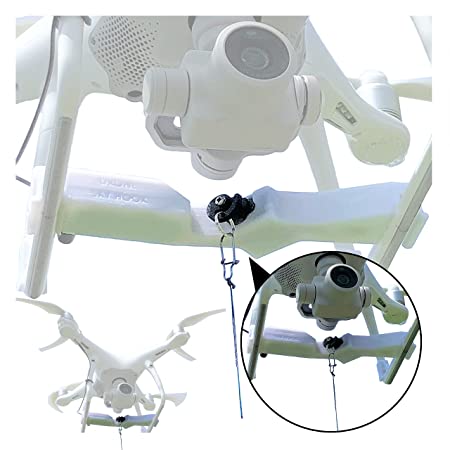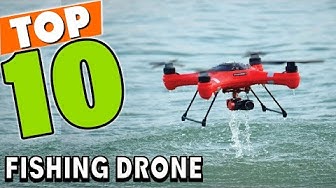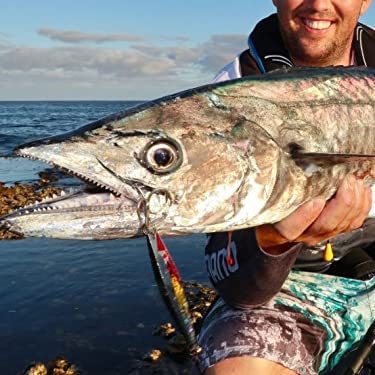
You can use a drone to see the waters surrounding your property if a fisherman is an avid one. Drones are equipped with many features including a GPS positioning and GPS receiver, a GPS transmitter, a GPS receiver, an angle-adjustable camera, and a mechanical payload. You can also purchase fishing lines, which are stable and safe. The SKY RIGGER drone is one such example.
SKY RIGGER drone fishing line
The SKY RIGGER flexible fishing line system allows you to fish from the sky with minimum effort. The system has two rotating leg clamps that can be mounted on a wide variety of drone models. The release mechanism has a bayonet style connection and a camlock arm to quickly open the line clamps. Sky RIGGER doesn't require batteries unlike other drones. This drone can take all kinds of fishing techniques and is safe.
For when a fish strikes your fly, the SKY RIGGER features an automatic release mechanism. You can also manually release your line with your rod or hand. This feature is standard on all SKY RIGGER models. It is recommended that you purchase a Phantom 3 before purchasing the new SKY RIGGER. Here are some pros and cons to the new line system.
It features a mechanical payload release
A good drone's mechanical payload release is one of its most important characteristics. Many of them allow anglers to quickly and easily release their fishing line. However, some models do not have a release mechanism. To remove the drone from the fishing line, the user must "yank” the line. This can be difficult, especially for those who aren’t used to releasing the line with their hands.

Another important feature of the drone's payload release system is its size. The payload should be able to release the drone's line when the fish is struck. Practice catch and release fishing before you attempt this method. This is because the fish can't be simply pulled to shore and released into the sea. Many have had positive experiences with the DJI Phantom. However, the technology is not yet up to the standard of other fishing drones.
It comes with a GPS location system
Rippton is a joint venture of Australia and Holland that specializes exclusively in technology-oriented fishing gear. Its goal is improve anglers' success by creating products that enhance the fishing experience. Rippton's Mobula drone features a GPS positioning system and a remote release. The Mobula drone can store bait at the top, protect against kite clippings, and is eco-friendly.
It's lightweight, weighing just 3 pounds, and can fly for up to 18 minutes. The high-tech GPS system allows it to be controlled up to 2,000 feet away. It has an operating range of 1000m (or half a mile) and intelligent flight modes. It can take high-quality pictures of its surroundings thanks to its point of interest function. Its high-resolution camera allows you to get great views of fish.
It includes a failsafe safety feature
Aerokontiki's fishing drone includes a failsafe safety feature. It monitors your battery level and releases the line as needed. It will return to dry land if the battery runs out and continue its mission. It operates with industrial-grade flightcontrollers, and it can work anywhere without requiring calibration. The drone can be used in even the most challenging water spots, and is waterproof.

FAQ
Can I fly my drone indoors
Yes, you can fly your drone indoors. There are only a few things you need to do: Make sure your home is free of obstacles and hazards. Avoid flying near windows, doors and heating vents.
A drone can spy on you.
Anyone can spy on you with a drone. The only way to protect yourself from drones is to be aware of them and avoid areas where they may fly. Notify 911 immediately if you find a drone in your vicinity.
Is the FAA able to regulate drones?
The FAA supervises all aspects related to drone operations, including certification requirements and safety standards.
Is it necessary to have special training in order to fly a drone
No, you don't need special training to fly your drone. All you need is a remote control unit and some basic knowledge of flight mechanics.
Statistics
- Research and Markets predict a growth rate of 51.1% over the next five years. (thedroneu.com)
- With the top 10% making over $100/h and the bottom 10% making as low as $10/h. (dronesgator.com)
- According to ZipRecruiter, the minimum hourly wage of drone pilots is $20. (thedroneu.com)
External Links
How To
How to Fly Drones with Beginners
A drone is an unmanned aerial vehicle that can be remotely controlled and used for surveillance, aerial photography, film production, research, and other hobby purposes. Drone technology has existed since World War II. DJI's Phantom quadcopters became commercially available in 2010. From beginner-friendly drones such as Parrot AR Drone 2.0 through professional-grade multirotor craft like DJI Mavic Pro, many types have been available.
You can fly a drone in many different ways, including:
-
Remote control: This uses a remote control device that attaches to your hand and allows you control the drone along its flight path. There are two main types of controllers: On/Off switches (like a radio) and joysticks.
-
Manual Control - This method uses a smartphone app to remotely control the drone using GPS coordinates. The app will provide instructions and help you to locate the drone.
-
Autonomous Flight: This means that the drone will take care of all the piloting. It's basically flying autonomously without any human intervention. The drone must be equipped with a camera and sensors that can capture images and data in order to fly autonomously.
-
Triggered Flight: This is similar in concept to manual control. The pilot manually creates a route and the drone then follows it until it reaches that endpoint. Once the programmed route is completed, the drone lands automatically and returns back to the base.
-
Landing Gear – A few drones come with landing gear. This allows them land safely in the event of losing power or running out of battery.
-
Goggles-Some pilots use goggles to protect their eyes from debris during operations.
-
Camera - Certain drones come with cameras that allow you to take photos and videos from high above.
-
Obstacles. Some drones can have obstacle avoidance technology that stops them from hitting obstacles.
-
Speed – Some drones can reach speeds in excess of 40 mph.
-
Battery Life - Most drones last between 20 and 3 hours depending on how much power they have.
-
Some drones have a range of up to 30 miles, depending on their model.
-
Power source - Not all drones can use an external power source. Others can run on internal batteries.
-
Weight - Some drones have a weight of less than 1 pound and others weigh 4 lbs.
-
Size - From small drones that can be carried in the palm of one's hand to larger drones that weigh over 50 pounds, drones come in a variety of sizes.
-
Price - From high-end models that cost thousands of dollars to low-cost options that start at $100, all drones fall under a certain price category.